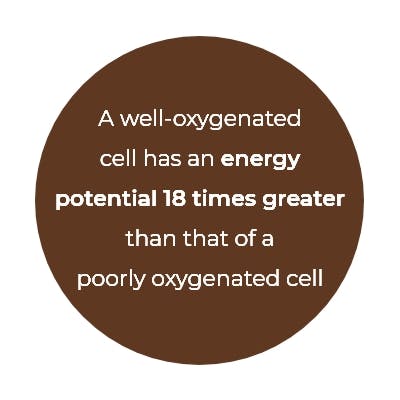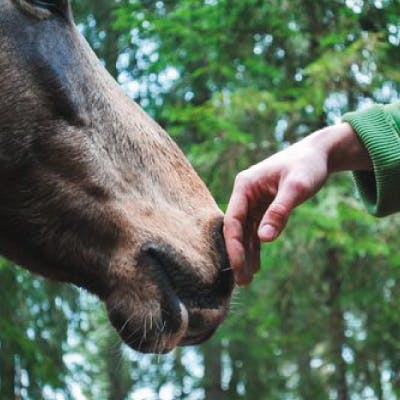High-performance oxygenation

According to ANSES, animal well-being is defined as ‘a positive mental and physical state linked to the satisfaction of their physiological and behavioural needs, as well as their expectations. This state varies according to the perception of the situation by the animal.’
The assessment of animal well-being, whatever the species, is carried out according to four main principles: nutrition, housing, behaviour and health.
Let's not forget that the horse is an athlete by nature, made to live in wide open spaces, far from pollution. Unfortunately, the accommodation, training and living conditions are no longer in line with their true nature. Time spent in a horse box, transportation and stress negatively impact their health and reduce their physical abilities.
With the Bol d'air Equin, the horse will receive the balanced cellular oxygenation it needs to live to its full potential.
Extraordinary breathing capacity
To ensure your horse's good health, it is important to understand how your horse operates.
Though movement is essential for good performance, nothing would be possible without an efficient respiratory system.
This is what guarantees the oxygen supply, required for the functioning of the whole organism, as well as the emission of carbon dioxide.
When we talk about breathing, we probably think of the horse's lungs and nostrils, but the respiratory system is a little more complex.
The amount of air circulating can reach 50,000 litres per day. The gas exchange surface of the lungs exceeds 500m2, the size of an Olympic swimming pool.
A horse does not breathe through its mouth, it uses only its nostrils. Horses are therefore forced to breathe through their noses, which is very limiting.. Additionally, their nostrils are also relatively small, and their ‘airways’ quite narrow. This causes great resistance when it comes to breathing, so they have to ‘force’ their breathing a little more than we do.
Their immunity and resistance threshold to exercise depend on their level of oxygenation, meaning the way in which the blood is able to capture oxygen at the pulmonary level, in order to transport and release it to the cells for energy production.
Any limitation of their oxygenation capacity is detrimental for their overall health and performance.

> 8-15 movements/min
> 66 L/min
> 50 L
> 60%
> through the nostrils
> 8-15 mouvements/min
> 5,4 L/min
> 6-7 L
> 30%
> through the mouth and nose
Benefits of good cellular oxygenation
Cells need constant and balanced oxygenation in order to meet energy demand.
Pollution and stress have a limiting effect on oxygenation and cause excess free radicals, just like intense physical activity.
The tissues become ‘hypoxic’ and are more likely to become inflamed. More than 40,000 scientific publications link hypoxia - a lack of cellular oxygenation - to most human and animal health problems. Hypoxia is said to be one of the primary factors behind a lack of regenerative capacities. It is therefore always important to improve tissue oxygenation while increasing resistance to oxidative stress.

Balanced cellular oxygenation is beneficial for:
> Respiratory preparation before a competition
> Endurance and resistance to physical activity
> Better performance in competitions
> Immediate recovery after physical activity
In what other cases is it necessary to optimise cellular oxygenation in horses?
> Anxiety, stress
> Cribbing
> Comfortable training



